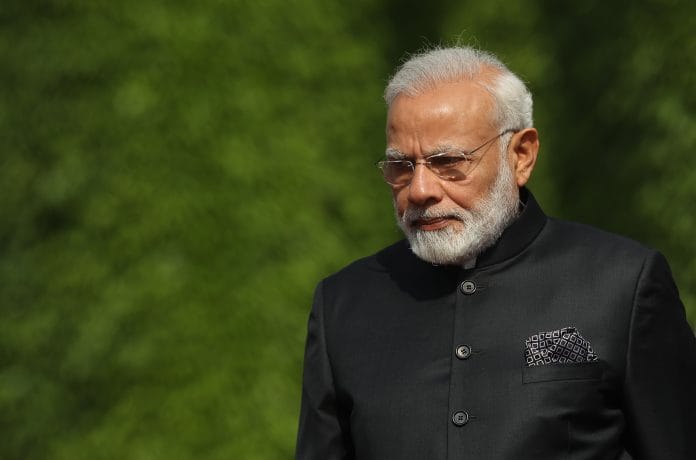A gradual systemic failure of banking and financial institutions can lead to catastrophic collapse of our economy.
Arvind Subramanian’s resignation this week as the Chief Economic Adviser (CEA) marks the exit of yet another high-profile economist, after Raghuram Rajan and Arvind Panagariya, from the Modi establishment.
The administration can ill afford scarcity in the talent pool of complementary economic experts at a time when finance minister Arun Jailey is recovering from his long-standing ailment, and overworked stand-in Piyush Goyal is juggling the department with his railways portfolio. This leaves us without a full-time finance minister while we face certain deep-rooted issues, primarily created by distressed assets, bad loans and defaults.
We are taking a quick look at the major concerns.
Non-performing assets (NPAs): As per a recent ASSOCHAM-CRISIL report, the gross NPA was expected to rise to Rs 9.5 lakh crore by March this year, with the value of the stressed assets reaching an astronomical Rs 11.5 lakh crore. The NPA growth has gone up from 4.62 per cent in 2014-15 to 7.79 per cent in 2015-16 and as high as 10.41 per cent by December 2017.
If the NPA to the bank capital ratio has to be restored to a level that was prevalent during the high growth years of 2003-2007, the capital base has to roughly quadruple. Even if we make an assumption that 50 per cent of the net NPAs would be recovered by the banking sector, the capital base has to double.
The government announcement in January on giving Rs 88,000 crore to 20 state-run banks in the current fiscal year as a part of its recapitalisation plan would turn out to be grossly insufficient, even if supplemented by highly efficient bad loan recovery programmes.
Public sector banks’ (PSBs) loan waivers: According to a recent RBI report, PSBs have written off loans worth a staggering Rs 2,72,558 crore between mid-2014 and December 2017. Written-off loans are removed from the balance-sheet of the bank concerned. Of this amount, a paltry Rs 29,343 crore has so far been recovered at a bad loan recovery rate of less than 11 per cent.
Based on a written reply submitted in the Lok Sabha by minister of state for finance, Shiv Pratap Shukla, the PSBs could recover only Rs 15,786 crore over a 21-month period that included the whole of financial year 2017 and the first three quarters of financial year 2018.
The Insolvency and Bankruptcy Code: The government’s panacea for bad loan recovery, the Insolvency and Bankruptcy Code (IBC), has so far yielded lukewarm results. At the end of December 2017, a year after the code was put in place, the IBC assisted in resolving just 1.9 per cent of the cases admitted. From these cases, the banks and the financial creditors are expected to recover only around 33 per cent of the total unpaid dues worth Rs 5,524 crore.
The resolved cases till then did not include even one of the 37 large debtors that were instructed by the RBI to be pushed for IBC proceedings. These debtors had cumulatively defaulted on loans worth almost 4 lakh crore.
The first major resolution under the IBC that recently happened in May 2018 may, however, turn out to be a tide turner. Tata Steel has acquired 73 per cent of Bhushan Steel for Rs 35,000 crore, with the proceeds of the acquisition used in settling almost two-third of Rs 56,000 crore in liabilities that Bhushan Steel owed its creditors.
Unless nudged by the RBI or the finance ministry, the banking and financial institutions are extremely reluctant to take their marquee clients through the IBC process. For resolving the banking sector crisis, further affirmative government action alongside swift recapitalisation – by making the IBC procedures more efficient and by creation of more effective loan recovery instruments – is required.
If not misused as a tool for meeting malicious political ends, the recently promulgated Fugitive Economic Offenders Ordinance 2018, which has provisions for confiscating assets of loan defaulters who flee the country, could be a potent instrument for bad loan recovery and a powerful deterrent against wilful defaults.
Ensuring that our banking and financial institutions are strong enough to support the capital requirements of our enterprises and individuals across all levels in every sector, thereby creating a robust engine for sustained economic growth, is arguably the biggest challenge in the final year of the current government, and would be so for any subsequent government in future. The alternative would be the gradual systemic failure of several of these institutions that could result in a paralysis, and even catastrophic collapse of our economy.
Anil K. Antony is executive director of Cyber India, and vice president of Navoothan Foundation. He tweets@anilkantony. Abinash Chaudhary is a New Delhi-based public policy consultant, and tweets @abinashchy.







Clearly, one of the misses of the last four years. Voters will search anxiously for the hits.